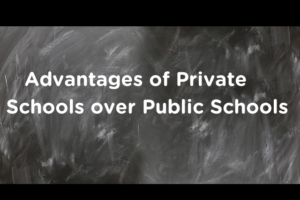Home Schooling Advantages and Disadvantages
Homeschooling in America is a growing trend. At last count there were over one and a half million children being homeschooled with the predicted annual growth for this year to be 3%.
If you are considering arranging for your kids to be home schooled take a look at the advantages and disadvantages listed below :
Advantages
Freedom of study
Most states are relaxed about students study routine. The basics obviously must be covered but if they are covered is up to the teacher. This means that parents who know their child can decide on the best way to cover a subject. There are a few states that still have restrictive legislation, in particular North Dakota.
Freedom of time and action
Once parents settle into the routine of home schooling they and their children enjoy a new sense of freedom as they are not restricted by school hours , school calendars and homework. They are able to plan family vacations out of season.
Freedom to develop emotionally
Home schooled children are often more self confident and self reliant than other children their age. They do not have to deal with bullying or peer pressure.
Freedom of Religion
Often families make the choice to home school children as they feel that their religion or spiritual beliefs are an important part of their family. If the children are home schooled then their beliefs can be a part of their education and daily lives.
Improved Family Interactions
Families that home school their children seem to have loving ties and close relationships. Teens in particular benefit and if they have been behavioral problems it usually shows improvement.
Stable Family Lives
There is much less disruption to children whose families move around a lot. In addition when there is a change in family circumstances the stability of home schooling settles everyone.
Routines that allow for rest and no homework
Children that live away from school often have to be up early to commute and then still come home to lots of homework often only falling into bed at midnight. As home schooled children can cover larger amounts of work in shorter times than regular classes there is no need for homework .
Disadvantages
Learning out of a school environment does consume a lot of parent’s time. Most people think that they can teach their children whilst cooking meals around the family kitchen table. The reality is that, that rarely works. A lot of time is taken by parents in planning lessons and outings. It can be draining .
Financial difficulties
Often one parent stays at home and is unemployed employed in order to give their children the home school advantage.This can be a big sacrifice and it can be come difficult to balance the budget.
24 /7 Interaction
There is no doubt that if you choose to home school you will be with your children most of your time .
Limited team sports and challenges
In some areas home schooled children are welcomed to join in at local schools with team sports .However this is not always the case and children can miss out on this important part of social interaction.
Most of the pros and cons of home schooling are listed above . It is not for all families but can be a very rewarding experience. Drop us your comments on other advantages and disadvantages of homeschooling kids which are not mentioned here.


